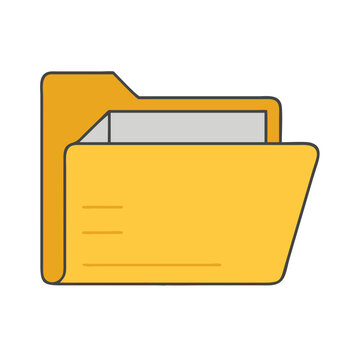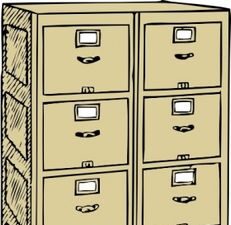Record keeping is one of the most important aspects to help things runs smoothly during the entire process. This ranges from ensuring you follow legal guidelines, to making sure you have all the necessary paperwork on hand for maximum efficiency, to inventory maintenance, to keeping up with physical and electronic records, and even to taking proper precautions around infectious disease substances. Click on each topic below to learn more about it.
Record Keeping
Record Keeping

Electronic data captures (EDCs) allow you to keep all electronic donor information in one place where the information is readily available and easily accessible.
EDCs such as REDCap are also very secure.
See the link below to visit REDCap's website.

Physical consent forms should be stored and digitized at the site where the brain remains.
Consent forms protect the rights of the donors including transparency and trust.
Having all logistical information readily available is very helpful.
Consent forms and paperwork ensure accountability, traceability, legality and ethicality.
Consent forms must be provided to the diener prior to brain removal and sometimes can be used to help authorize the release of the decedent from a hospital/facility.
Using Docusign for consenting is easy, efficient, and includes suggested scripts.
Docusign provides clarity to potential donors, speeds up the consenting process, allows for further outreach to potential donors, and minimizes the risk of errors.
A major impact of using Docusign would be its accessibility where the paperwork can be done with one click on the device of choice.
In addition, hospitals recognize and accept electronic signatures for the release of the body in most cases.
It will be helpful to have a fax machine when working with electronic documents.
See the links below for examples of an informed consent form and a post-mortem telephonic consent form.

Toxicology reports can be critical in many research, medical, and legal contexts.
Infectious disease history and toxicology reports also help researchers in deciding if that tissue would be beneficial for their study or not.

Store all the medical record of each participant in one convenient place.
This would include family permission, contact of PCP, and proper release of information among other things.

As listed, case reports include important additional info to provide researchers.
They help calculate post-mortem interval, or PMI, times (quality of tissue procurement).
It also helps the neuropathologist with their final neuropathology assessment.
See the link below if an example of the "day of case" information collected.

Get to know your MTA representative.
They ensure the user of the sample(s) has a responsibility to acknowledge the institution in publications.
Standardize an overarching document/template for the MTA.
See the link below for an example of a MTA.

Maintenance of your inventory has a huge effect on proper organization for the handling, storage, and use of tissue.
It also effects your ability to have the proper materials present for maximizing efficiency, minimizing PMI, and maximizing space for more storage.
Setting up routine inventory checks will avoid unnecessary speed bumps.
REDCap helps with keeping track of your samples, but there are also other very good management software out there you can use.

Coroner's release happens in cases where the individual is not enrolled in hospice care or they passed in a suspicious manner.
The coroner's release number and case ID is needed to access data about the individual from the coroner.
Collecting PCP/physician information at the time of consenting and continuing to update this during visits will be very helpful.
This all has an impact on the speed and time it takes to freeze/fix the brain in relation to post-mortem interval (PMI).

It allows you to send donor information to investigators for scientific accuracy without identifying personal information. This maintains confidentiality such as pathology, clinical history, PMI, and gender among other things.
Intake forms and folders keep the brain bank informed of contact information.
They help you follow ethical and legal compliance.
They also help in tracking of when donations occurred, for what cohort, and the use of the donor’s brain tissue as well as to where.
It supports longitudinal studies.
Please see the link below for an example of a brain donation intake form/donor registration form.
FAQs
Record Keeping: Frequently Asked Questions
General Overview
Q: Why is record keeping so important in brain donation?
A: Strong record keeping ensures compliance with legal and ethical guidelines, keeps the process running smoothly, and provides accountability to families, researchers, and oversight bodies like the IRB.
Q: What happens if documentation is incomplete or inaccurate?
A: Missing or incorrect records can compromise research integrity, create legal risks, and undermine family trust. That’s why thorough, accurate record keeping is required at every step.
Electronic Data
Q: What systems are used for electronic records?
A: Programs often use secure platforms like REDCap or similar, which allow easy access on computers and phones. These systems provide secure, centralized storage for donor data.
Q: Why use electronic systems instead of paper alone?
A: Electronic records ensure quick access during urgent calls, reduce the risk of lost paperwork, and allow better coordination across team members.
Consent Forms
Q: Where should consent forms be stored?
A: Both physical and scanned copies should be stored at the site where the brain is banked and uploaded into the program’s secure database.
Q: What if consent was obtained by phone?
A: Telephonic consent must follow IRB-approved procedures, with documentation saved electronically (e.g., via DocuSign) and stored in the donor’s case file.
Infectious Disease & Toxicology
Q: Why is it important to record infectious disease status?
A: Documentation ensures staff and researchers are aware of risks like prions, HIV, or hepatitis, and can take proper precautions. If results aren’t available, tissues should be labeled with a universal precautions disclaimer.
Q: Where do infectious disease results come from?
A: Either from the donor’s medical history or through post-mortem blood testing. Results are documented and stored with the donor’s case file.
Medical Records
Q: What medical records are collected for brain donation?
A: Clinical information such as cause of death, medication history, neurocognitive testing results, imaging, and relevant health history.
Q: Why are medical records important?
A: They help researchers interpret findings and provide context for neuropathological results. They also help explain unexpected discoveries in the brain.
Day-of-Case Documents
Q: What forms are used on the day of a brain donation?
A: Chain-of-custody forms, transport releases, and intake reports. These capture times, handlers, and any unusual circumstances.
Q: Why are day-of-case forms critical?
A: They ensure smooth communication across coordinators, technicians, and transport providers, and provide transparency to the family.
Material Transfer Agreements (MTAs)
Q: What is an MTA?
A: A Material Transfer Agreement is a legal document required when brain tissue or biofluids are shared between institutions. It defines how samples can be used and protects both the donor and the program.
Q: Who prepares MTAs?
A: Usually the institution’s contracts or legal office, in collaboration with the brain bank leadership.
Coroner & Primary Care Physician (PCP)
Q: Why do coroners or PCPs need to be contacted?
A: Coroners confirm time and cause of death when necessary, while PCPs can provide medical background information and support for family questions. Documentation of these communications ensures accuracy and compliance.
Q: What if the coroner or PCP cannot be reached right away?
A: Note the attempts to contact them in the record, and continue coordination as soon as possible. Always document communication efforts.
Intake Form & Folder
Q: What information goes into the intake form/folder?
A: Key details for each donor, including demographics, dates, times, location of death, medication lists, NOK information, and consent documents.
Q: Why is the intake folder important?
A: It keeps all critical information in one place, making it easy for staff to coordinate across the case and reducing the chance of missing details.
Inventory
Q: Why is inventory management important in brain donation?
A: Proper inventory ensures that all tissue, biofluids, and related materials are accounted for, correctly labeled, and stored safely. It protects research integrity and prevents errors or sample loss.
Q: What needs to be tracked in inventory?
A: Every donated brain, dissected section, biofluid sample, and associated document (e.g., consent forms, infectious disease reports). Each item should have a unique identifier that links it back to the donor’s record.
Q: How should inventory be maintained?
A: Programs should keep both physical logs and electronic databases, updated in real time. Freezers, refrigerators, and storage areas should have monitoring systems (e.g., for temperature) to protect samples.
Q: What happens if an item is missing or mislabeled?
A: Immediately notify the program coordinator or PI, document the issue in the records, and investigate. Errors must be corrected quickly to avoid compromising research or donor trust.
Q: Who is responsible for inventory checks?
A: Usually the brain bank or laboratory staff, but coordinators should also verify that all materials from each case are logged correctly. Many programs perform routine audits to ensure accuracy.